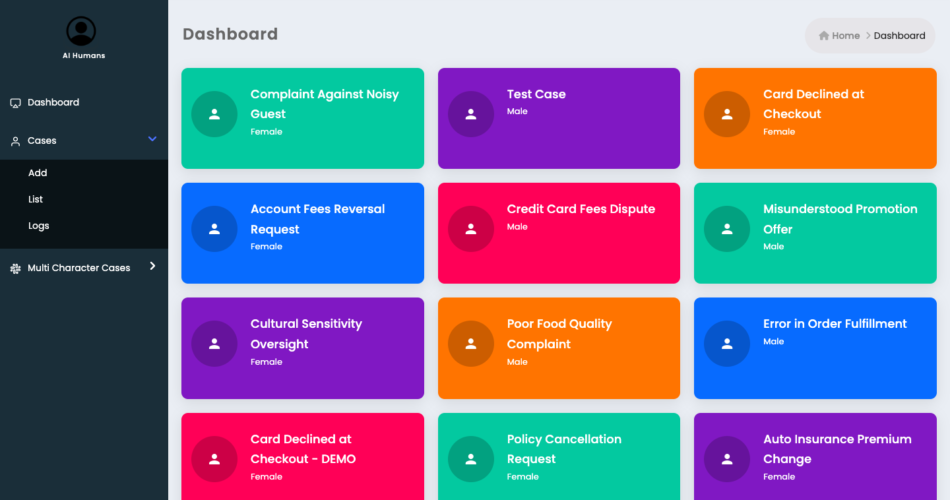Instructional design has always been about crafting engaging and effective learning experiences. As we enter the era of AI and advanced digital technologies, the role of instructional design has evolved to meet the demands of learners in a rapidly changing digital landscape. AI-driven instructional design, such as the solutions offered by AI Humans, is revolutionizing how we create, deliver, and interact with educational content.
What is Instructional Design?
Instructional design is the strategic creation of educational content that aligns with specific learning objectives. It emphasizes engagement, applicability, and effectiveness, ensuring the learning material meets the needs of its intended audience. In today’s world, where learning often takes place outside traditional classrooms, instructional design has transitioned to embrace digital, interactive, and learner-centric methodologies.
Instructional Design Models: A Foundation for Innovation
Several foundational models guide instructional design:
- ADDIE Model: A structured, five-phase approach—Analysis, Design, Development, Implementation, and Evaluation—ensures comprehensive and systematic content creation.
- Gagne’s Nine Events of Instruction: These cognitive steps focus on engaging learners, providing guidance, and reinforcing knowledge retention.
- Merrill’s Principles of Instruction: Centered on real-world problem-solving, this model promotes task-based learning to ensure practical application.
These models remain relevant, but the integration of AI is driving the next wave of innovation.
Technology’s Transformative Impact on Instructional Design
From Paper to Pixels
Digital tools have transformed static learning materials into dynamic, interactive formats. This shift allows for instant updates, multimedia-rich content, and flexible delivery methods, catering to diverse learning preferences.
Immediate Feedback and Personalized Learning
AI enables real-time feedback, offering learners instant insights into their progress. Adaptive learning systems tailor content to individual capabilities, ensuring learners are challenged at an appropriate level, fostering better retention and understanding.
Microlearning for Maximum Impact
Short, targeted learning sessions, often delivered via mobile devices, fit seamlessly into busy schedules. Microlearning enhances retention by breaking down complex topics into digestible chunks.
Collaborative and Global Learning
Digital platforms foster collaboration, allowing learners worldwide to interact through virtual classrooms, forums, and shared documents. This global interaction enhances critical thinking and broadens perspectives.
AI-Powered Instructional Design: The Game Changer
Data-Driven Content Creation
AI analyzes learner data to create highly targeted and effective content. By understanding individual needs and preferences, instructional designers can focus on creativity while AI handles the heavy lifting of analysis.
Adaptive Learning Paths
AI-driven platforms adjust course complexity dynamically, ensuring every learner progresses at their own pace. This personalization leads to a more engaging and effective learning experience.
Virtual Tutors and Realistic Scenarios
AI-powered virtual characters, like those offered by AI Humans, simulate real-world interactions. Learners gain valuable skills through realistic scenarios, enhancing both confidence and competence.
Comprehensive Performance Analytics
AI provides detailed performance insights, highlighting strengths and pinpointing areas for improvement. This data-driven feedback loop empowers learners to refine their skills continuously.
Why Choose AI-Driven Instructional Design?
The integration of AI into instructional design opens up new possibilities:
- Engaging, learner-centric experiences tailored to individual needs.
- Real-world simulations that prepare learners for practical applications.
- Scalability and accessibility for global audiences.
- Rapid adaptation to evolving learning objectives and technologies.
The Ethical Perspective
As AI becomes central to instructional design, ethical considerations are paramount. Responsible use of AI ensures equitable access, data privacy, and content integrity, creating a future where technology enhances education for everyone.
Experience the Future with AI Humans
At AI Humans, we leverage cutting-edge AI technologies to design instructional solutions that blend innovation with practicality. Our virtual human interactions and AI-driven tools redefine how learners engage with content, ensuring impactful and transformative learning experiences.
Discover the future of instructional design today. Let AI Humans guide you into a world of possibilities where AI meets education.
For more, visit AI Humans Instructional Design.

